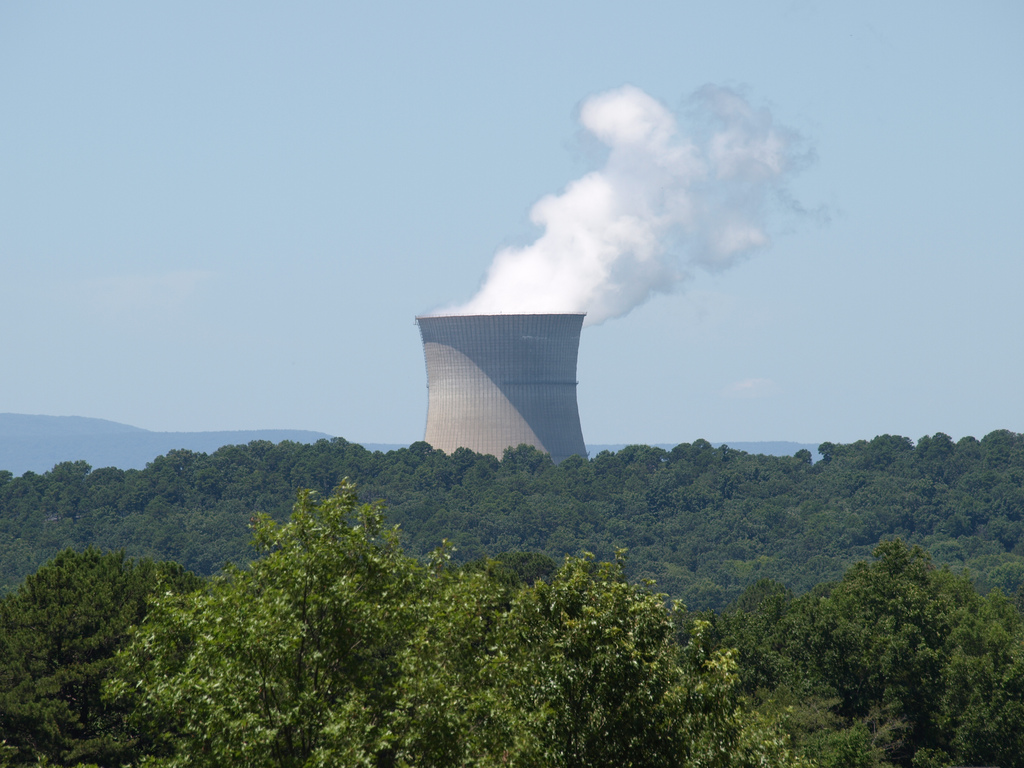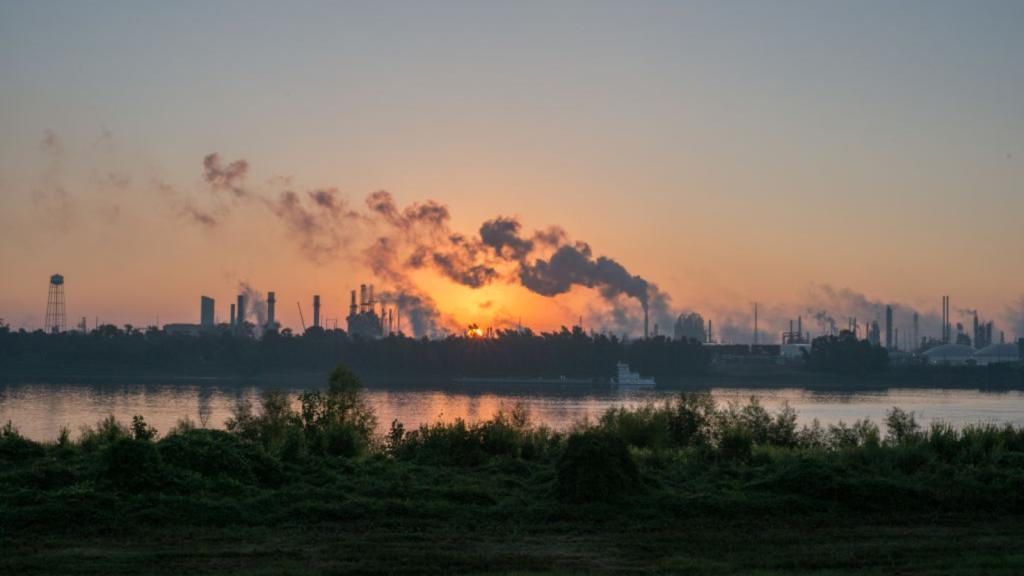During the energy portion of his first State of the Union address last week, President Obama called for “building a new generation of safe, clean nuclear power plants in this country.”
That raises a question: Exactly what generation of nuclear power is Obama talking about — and what makes it an improvement over the generation we now have, with its high cost and threats to public health and the environment?
The commercial nuclear power plants operating in the United States today are what are known as Generation II reactors. Built through the 1990s, they include the design types known as pressurized water reactors, which comprise the majority of all U.S. nuclear plants, as well as boiling water reactors, the other type used by the U.S. power industry. Both of them are what are known as “light water reactors,” which means they use ordinary water to cool the reactor.
Before the reactors of today came those of Generation I, the first commercial nuclear power plants in the U.S. Among them are Shippingport near Pittsburgh, which operated from 1957 to 1982; Fermi on the shore of Lake Erie about 30 miles from Detroit, which began operating in 1957 and closed in 1972, six years after experiencing a partial fuel meltdown; and Dresden Unit 1 at Exelon’s existing nuclear plant near Morris, Ill., which went active in 1960 and retired in 1978.
The so-called Generation III reactors have designs similar to their Gen II predecessors but have incorporated some improvements, like more advanced safety systems. These models include GE’s Advanced Boiling Water Reactor, the design selected for the planned expansion of the South Texas Project on the Colorado River 90 miles southwest of Houston, and Mitsubishi’s Advanced Pressurized Water Reactor, two units of which are planned for Luminant’s Comanche Peak plant 60 miles southwest of Dallas. There are also what are known as the Generation III+ reactors; these include Westinghouse’s AP1000 reactor, 13 of which are slated for plants across the Southeast. However, the AP1000 still has not received Nuclear Regulatory Commission approval due to serious design flaws.
And then there are the Generation IV reactors. At the moment, these designs are largely theoretical and aren’t expected to be available for commercial construction for at least another decade. They include so-called fast reactors, which require richer fuel and are cooled by substances other than regular water, such as liquid sodium.
One of the loudest cheerleaders for Generation IV nuclear power plants — particularly the fast reactors — has been James Hansen, director of NASA Goddard Institute of Space Studies and an outspoken advocate for addressing manmade global warming. In a recent interview posted at the Big Think website, Hansen makes the case for Gen IV nuclear as a necessary piece of a warming world’s energy future:
And there’s also the possibility for fourth-generation nuclear power. That’s a technology which allows you to burn all of the nuclear fuel. Presently, nuclear power plants burn less than 1 percent of the energy in the nuclear fuel. Fourth-generation nuclear power allows the neutrons to move faster, so it can burn all of the fuel. Furthermore, it can burn nuclear waste, so it can solve the nuclear waste problem. And the United States is still the technology leader in fourth-generation nuclear power. In 1994, Argonne National Laboratory, now called Idaho National Laboratory, was ready to build a fourth-generation nuclear power plant, but the Clinton-Gore administration canceled that research because of the antinuclear sentiments in the Democratic Party. Well, we still have the best expertise in that technology, and we should develop it because it’s something we could also sell to China and India, because they’re going to need nuclear power. They are not going to be able to get all of their energy from the sun and from the wind.
However, not everyone is as keen on Gen IV nuclear as Hansen. Amory Lovins, a leading sustainable energy expert with the Rocky Mountain Institute in Colorado, argues that there is no economic, environmental, or security rationale for the kinds of Gen IV reactors most often promoted, including fast reactors. In a recent analysis titled “‘New’ Nuclear Reactors, Same Old Story,” Lovins points out that these reactors are touted for their ability to burn plutonium, a radioactive waste product created in currently operating nuclear power plants. However, that would require plutonium reprocessing facilities, which creates a whole other bunch of thorny problems:
Reprocessing of any kind makes waste management more difficult and complex, increases the volume and diversity of waste streams, increases … the costs of nuclear fueling, and separates bomb-usable material that can’t be adequately measured or protected. Mainly for this last reason, all U.S. Presidents since Gerald Ford in 1976 (except G.W. Bush in 2006-08) discouraged it.
Lovins also challenges Hansen’s claim that fast reactors “can solve the nuclear waste problem” by burning the waste:
[Fast reactors] are often claimed to “burn up nuclear waste” and makes its “time of concern … less than 500 years” rather than 10,000-100,000 years or more. That’s wrong: most of the radioactivity comes from fission products, including very long-lived isotopes like iodine-129 and technicium-99, and their mix is broadly similar in any nuclear fuel cycle. [Fast reactors’] wastes may contain less transuranics [that is, radioactive elements with atomic numbers greater than uranium], but at prohibitive cost and with worse occupational exposures, routine releases, accident and terrorism risks, proliferation, and disposal needs for intermediate- and low-level wastes. It’s simply a dishonest fantasy to claim that such hypothetical and uneconomic ways to recover energy or other value from spent [Light Water Reactor] fuel mean “There is no such thing as nuclear waste.” Of course, the nuclear industry wishes this were true.”
But with U.S. efforts to address climate change hampered in part by powerful corporate interests’ stranglehold over the legislative process, at least one longtime anti-nuclear group has said it’s willing to discuss Gen IV nuclear as part of the potential solution to man-made global warming.
Last week, the N.C. Waste Awareness and Reduction Network wrote to Hansen in advance of his Feb. 1 speech at UNC-Chapel Hill. In the letter, Executive Director Jim Warren said his group’s respect for the scientist — along with the severity of the accelerating climate crisis — meant it was “willing to be persuaded” on fourth-generation nuclear power technology.
While noting its opposition to Gen II and III plants as well as the problems with Gen IV fast reactors and associated nuclear waste reprocessing, N.C. WARN has called for a “vigorous and honest debate” … that “could help determine whether and where it might be necessary to pursue new nuclear — or put all available resources behind clean, efficient energy.”
But the question remains: Is this Gen IV technology — with all its promise and perils — what President Obama was talking about in his State of the Union address when he referred to a “new generation” of nuclear power?
It appears that the answer is no, given that Obama’s proposed Fiscal Year 2011 Department of Energy budget unveiled today will reportedly triple the taxpayer loan guarantee program for new reactor construction to $54 billion. That program is providing financing for building Generation III reactors — not the Gen IV variety promoted by Hansen.
Obama’s decision to promote the continued building of old-school nuclear reactors — which as a candidate he said he did not embrace because of safety concerns and the need for huge taxpayer subsidies — is especially perplexing given that his administration has canceled plans to store radioactive waste in the Yucca Mountain repository in Nevada.
That raises another question: What does the president plan to do with all that radioactive waste that’s currently piling up at nuclear power plants nationwide? To date, Obama still has not offered the American people an answer.
(This story originally appeared at Facing South.)



